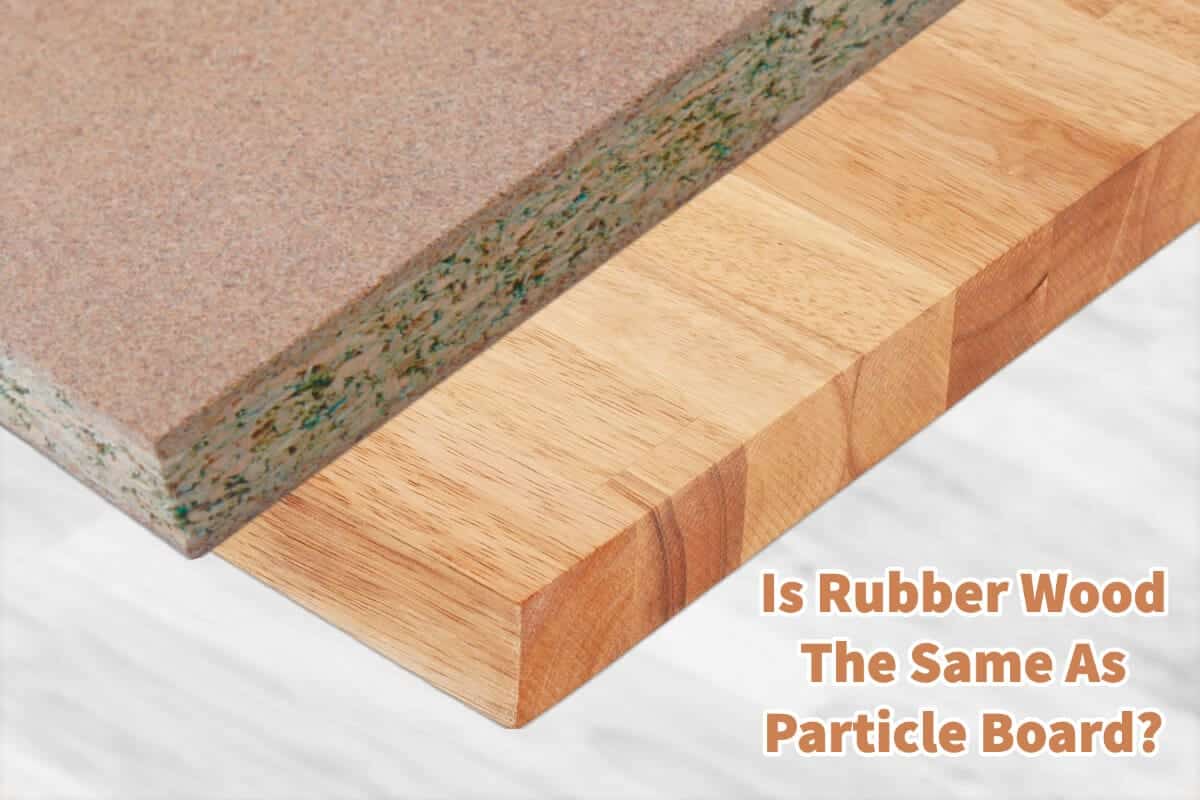When it comes to choosing wood for furniture and other types of projects, many options are available on the market. At Mondoro, we use some particle board and rubber wood for our furniture and other production.
Rubber wood and particle board are not the same types of wood. Rubber wood is a solid wood whose wood comes from the rubber tree. Particle board is considered engineered wood as the wood is made up of made by combining wood particles, such as sawdust and wood chips, with a resin binder; it is not considered solid wood.
Table of Contents
- Rubber Wood Is Not The Same As Particle Board
- About The Composition Of Rubber Wood Vs. Particle Board
- About The Uses Of Rubber Wood Vs. Particle Board
- Frequently Asked Questions
- Related Content
Rubber Wood Is Not The Same As Particle Board
Rubber wood and particle board are popular wood choices, but each has unique properties and applications. They are not the same kind of wood and have some notable differences.
We will explore some of the significant differences between rubber wood and particle board, including their composition, uses, and advantages for each kind of wood.
About The Composition Of Rubber Wood Vs. Particle Board
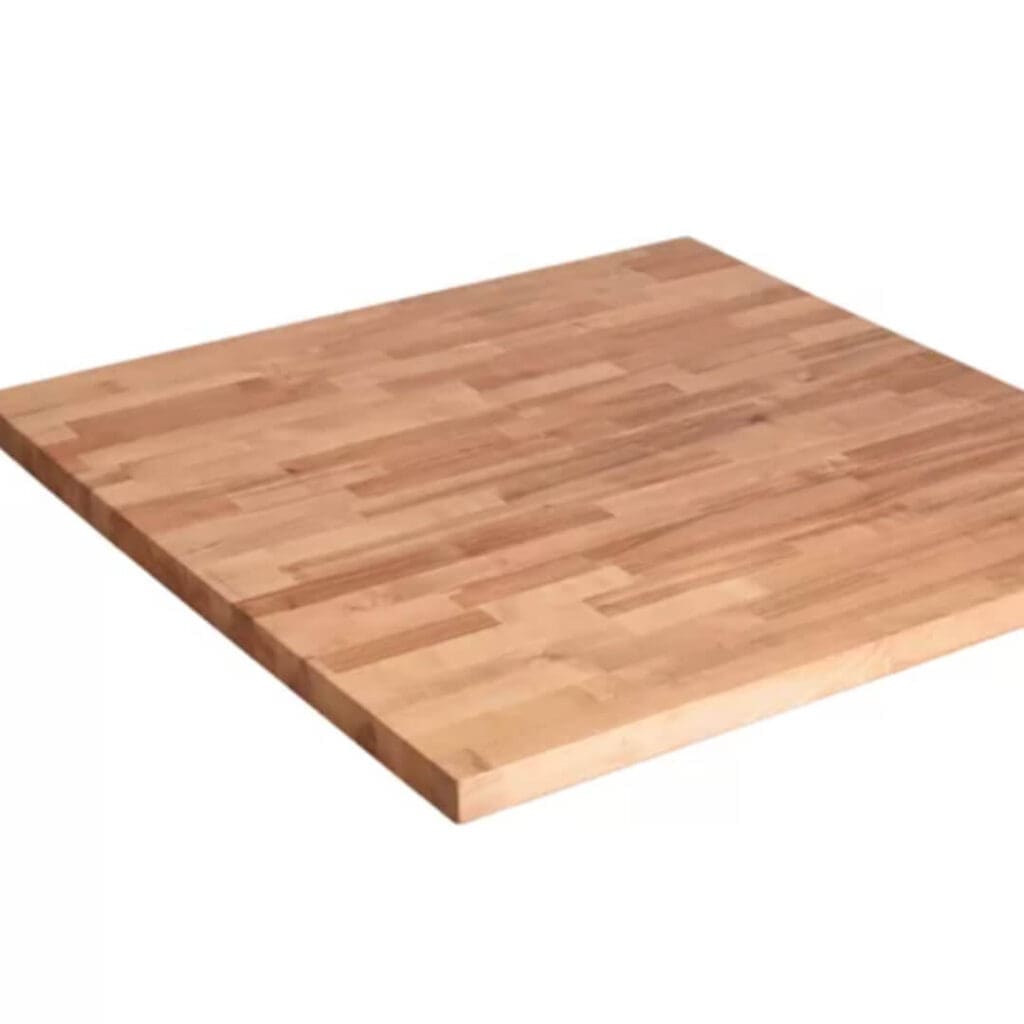
One of the most significant differences between rubber wood and particle board is their composition. Rubber wood is a solid wood, while particle board is a composite material made from wood particles and adhesives.
Rubber wood is derived from the rubber tree, a hardwood. It is known for its uniform grain pattern, which gives it a consistent and attractive appearance.
Rubber wood is also easy to work with, takes stains and finishes nicely, and is relatively inexpensive compared to other hardwoods.
Rubber wood is considered eco-friendly, as before 1980, rubber wood was burned and deemed unusable. With the invention of new technology, rubber wood can be adequately dried and processed, making it the hardwood it is today.
Even though rubber trees were once used to extract latex, rubber trees do not have any latex in them, but rubberwood is 100% solid wood.
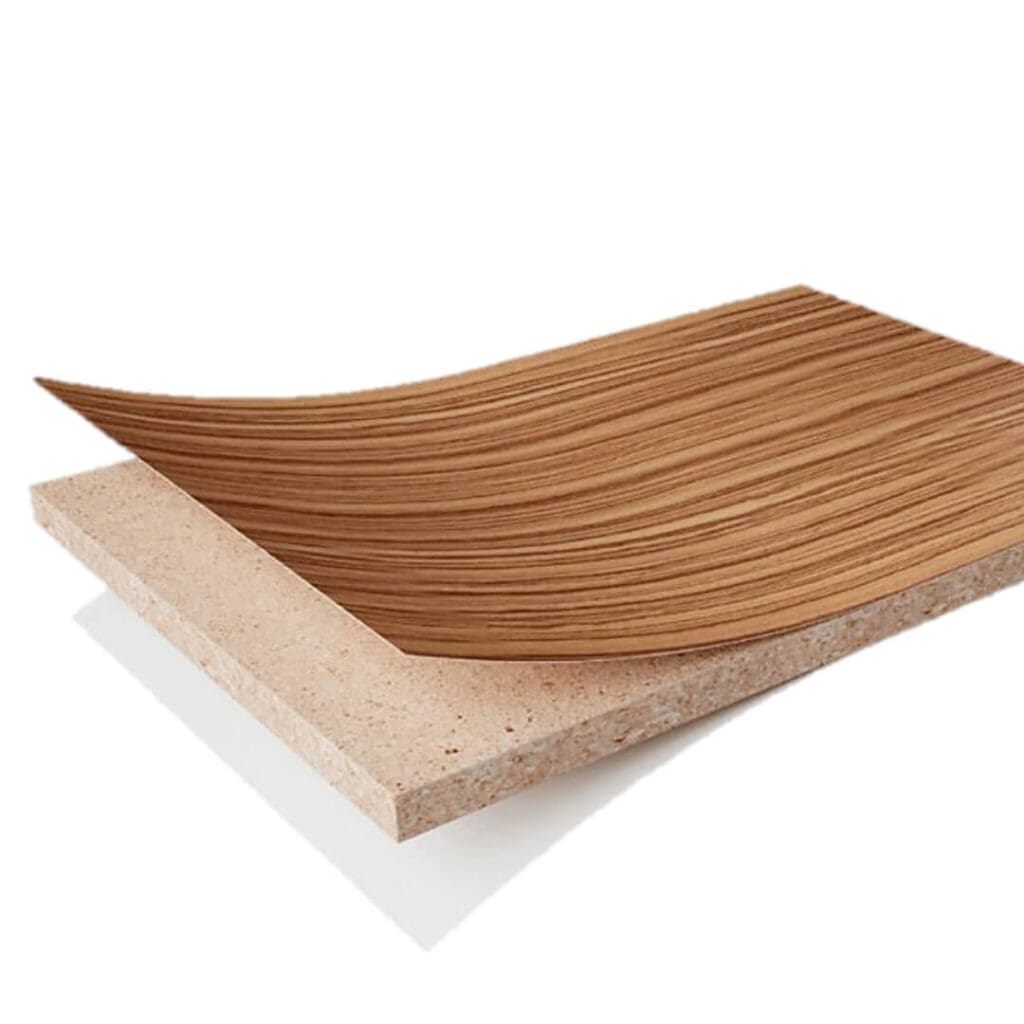
On the other hand, particle board is made from small wood particles, such as sawdust or shavings, that are bonded together using adhesives and pressure.
The particle board is usually covered with a veneer or laminate to give it a finished appearance. Because it is made from smaller pieces of wood, particle board is not the same as solid wood.
Particle Board Vs. Solid Wood
Particle board is considered a type of engineered wood. Engineered wood is any wood product that binds wood fibers, particles, or veneers using adhesives or other methods.
This contrasts solid wood, like rubber wood, made from a single piece of wood, and then the wood is cut and joined together.
A particle board is an engineered wood made by combining wood particles, such as sawdust and wood chips, with a resin binder and then pressing the mixture together under high heat and pressure.
Due to the nature of the production process, particle board is a strong, dense, and uniform material suitable for a wide range of applications, including furniture, cabinetry, and flooring.
Other types of engineered wood include plywood, oriented strand board (OSB), medium-density fiberboard (MDF), and laminated veneer lumber (LVL).
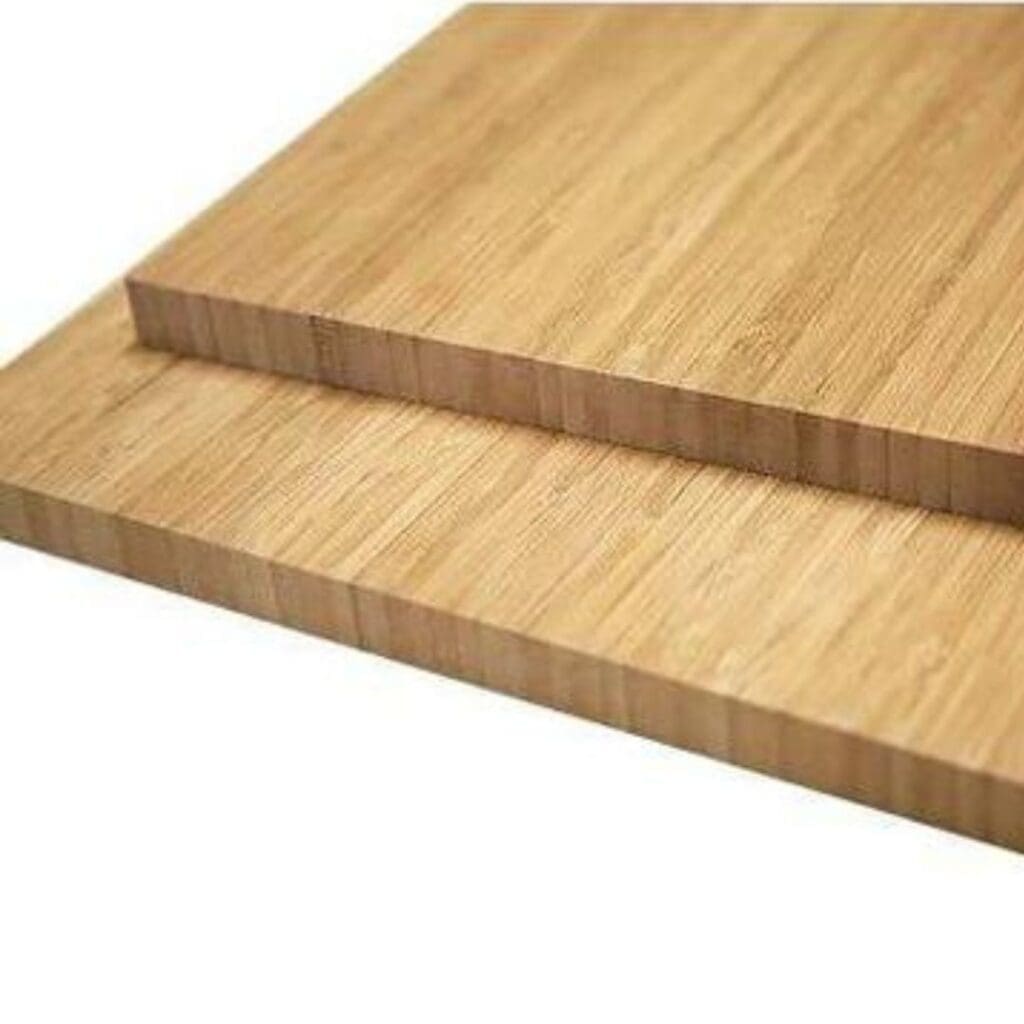
Many of these engineered woods may offer advantages over solid wood, including increased strength, durability, stability, and improved resistance to moisture and pests.
They are often more cost-effective and environmentally friendly than solid wood by using smaller, more sustainable wood fibers and scraps.
About The Uses Of Rubber Wood Vs. Particle Board
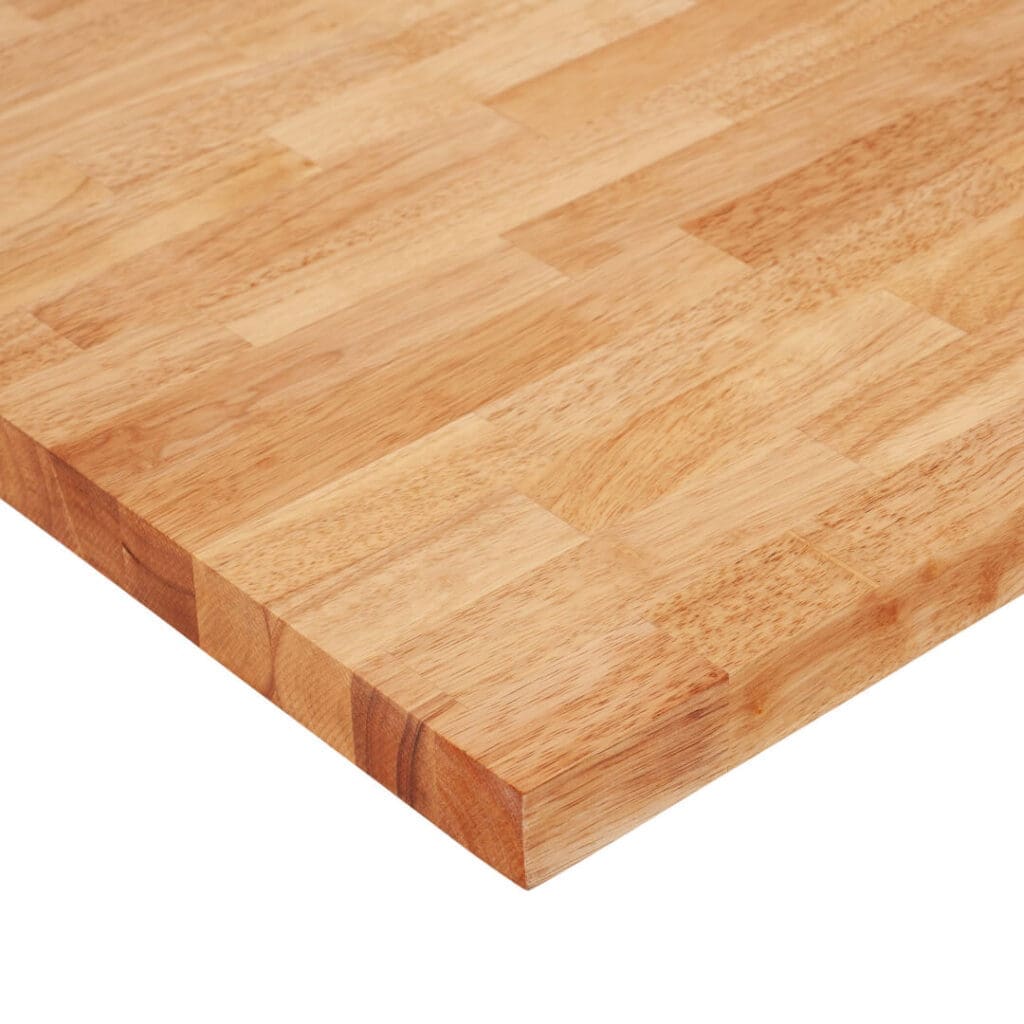
Rubber wood and particle boards have different uses in furniture and other projects. Rubber wood is commonly used for furniture, flooring, cabinetry, and other decorative items. It is also used in construction as a strong and durable material.
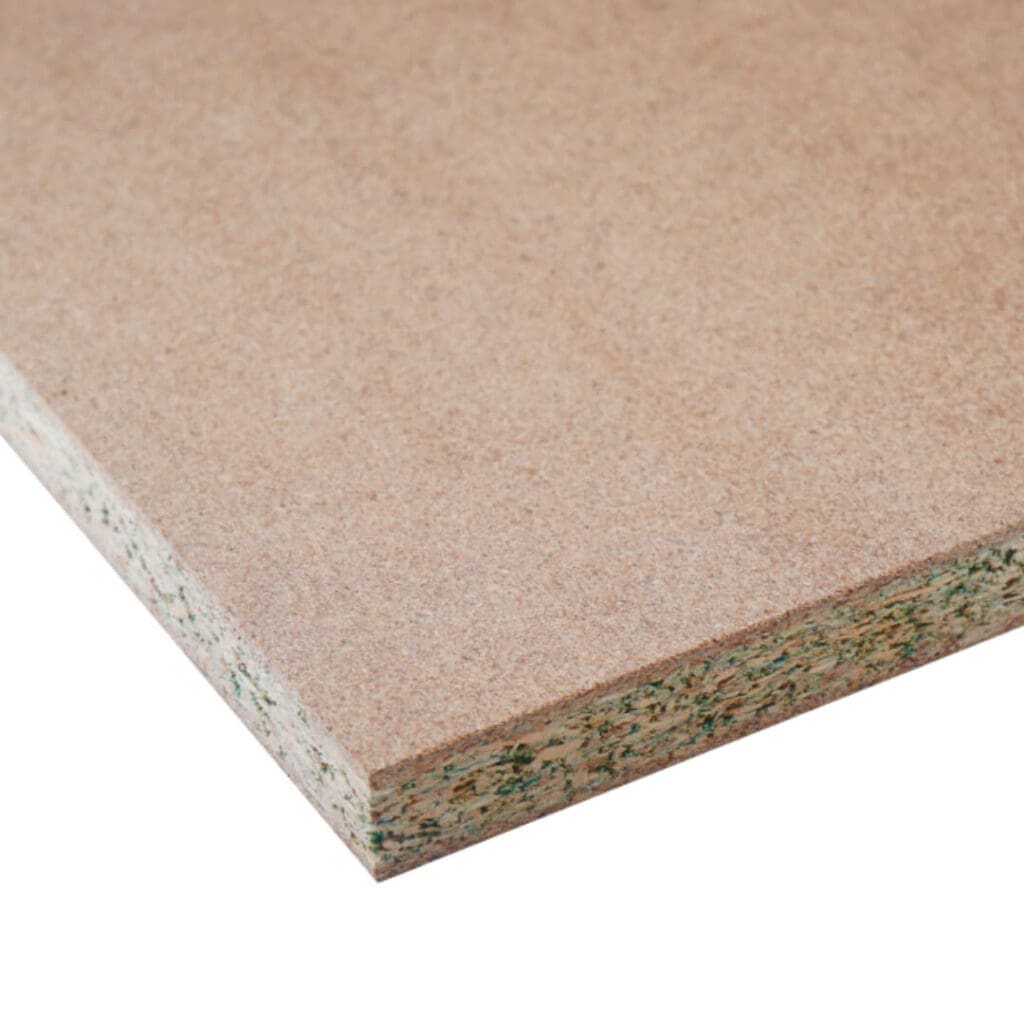
Particle board, on the other hand, is often used as a cheaper alternative to solid wood in furniture and construction. It is commonly used for shelves, cabinets, and other structural components. Particle board is also used to produce flooring, wall panels, and decorative finishes.
The Advantages Of Rubber Wood Vs. Particle Board
Both rubber wood and particle board have advantages and disadvantages, depending on the specific application for the wood. Most furniture manufacturers will use solid wood and particle board to produce furniture.
Rubber wood is a sustainable and environmentally friendly option, as it comes from a renewable resource. It is also a durable and strong hardwood that is easy to work with and can be customized to match various design styles.
An advantage of rubber wood is that it does not have much grain, so that it can take to various finishes very well.
On the other hand, Particle board is cost-effective, widely available, and easy to work with. It is also more resistant to moisture and humidity than solid wood, making it a good choice for areas with high humidity levels.
Particle board would not be prone to cracking, so it is usually an ideal kind of wood to use for things such as the back of furniture, shelves, or wall panels.
Both rubber wood and particle board are two distinct types of wood with unique properties and applications. Rubber wood is a solid hardwood known for its strength, durability, and attractive appearance.
Particle board is a composite material made from wood particles and adhesives that is a cost-effective alternative to solid wood. Ultimately, the choice between rubber wood and particle board will depend on the specific needs and requirements of the project for which you need the wood.
Find out more about how Mondoro can help you create, develop, and manufacture excellent home decor and furniture products – don’t hesitate to contact me, Anita. Check out my email by clicking here or become a part of our community and join our newsletter by clicking here.
Mondoro gives out a FREE Lookbook to anyone interested. You can receive a copy of our latest Lookbook by clicking here.
Listen to our Podcast called Global Trade Gal. You can find it on all major podcast platforms. Try out listening to one of our podcasts by clicking here.
Subscribe to our Mondoro Company Limited YouTube Channel with great videos and information by clicking here.
Frequently Asked Questions
What is rubberwood?
Rubber wood is a type of wood that comes from the rubber tree (Hevea brasiliensis). It is primarily used for its latex production but is also valued for its timber.
What is particle board?
Particle board is a type of engineered wood made by combining wood particles, such as sawdust and wood chips, with a resin binder. It is not considered solid wood.
Are rubber wood and particle board the same type of wood?
No, rubber wood and particle board are not the same types of wood. Rubber wood is solid wood obtained from the rubber tree, while particle board is an engineered wood product made from wood particles and resin.
How is rubber wood different from particle board?
Rubber wood is a natural, solid wood, while particle board is a man-made product composed of wood particles bonded together. Rubber wood is known for its strength and durability, while particle board is often used for its affordability and versatility.
Can rubber wood and particle board be used interchangeably?
Rubber wood and particle board have different characteristics and properties, so they are not typically used interchangeably. Rubber wood is commonly used in furniture and cabinetry, while particle board is often used for inexpensive furniture, shelving, and other applications.
Which one is considered solid wood, rubber wood, or particle board?
Rubber wood is considered solid wood as it is obtained directly from the rubber tree trunk. On the other hand, particle board is an engineered wood product and not classified as solid wood.
Is rubber wood more expensive than particle board?
Generally, rubber wood is more expensive than particle board. Rubber wood is a higher-quality material with desirable characteristics, while particle board is a more economical option due to its manufacturing process and composition.
What are the advantages of using rubber wood?
Rubber wood is known for its strength, durability, and attractive grain patterns. It is also considered an environmentally friendly option as it comes from a renewable source (rubber trees) and helps to utilize plantation resources effectively.
Related Content
Is Teak a Coniferous, Evergreen, or Deciduous Tree? 11 Teak Wood Facts
Teak is a deciduous, not evergreen or coniferous tree. Teak leaves do not fall off in the wintertime but in the dry season; in Asia, where teak trees are naturally grown, the dry season is not always the same as winter. As the teak leaves do fall off, the tree is considered to be a deciduous tree.
You can learn more by reading our blog, Is Teak a Coniferous, Evergreen, or Deciduous Tree? 11 Teak Wood Facts, by clicking here.
Why Is Cherry Wood Furniture So Expensive?
Cherrywood is a wood found to be harvested in America and Europe. There are many reasons why Cherrywood is expensive when used on furniture pieces, but the price will also depend upon what kind of wood is used.
You can learn more by reading our blog, Why Is Cherry Wood Furniture So Expensive? by clicking here.
What Are The Types Of Wood Used In Furniture?
Wood for furniture is divided up into complex and softwood. Though the woods have some similarities, they also have some differences. Different looks and types of furniture may require a certain kind of wood. Some wood species will be higher priced, and others will be cheaper; price, durability, look, color, finish, and structure can decide what wood to choose for your furniture piece.
You can learn more by reading What Are The Types Of Wood Used In Furniture? by clicking here.

